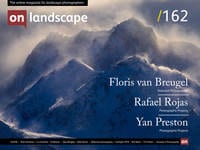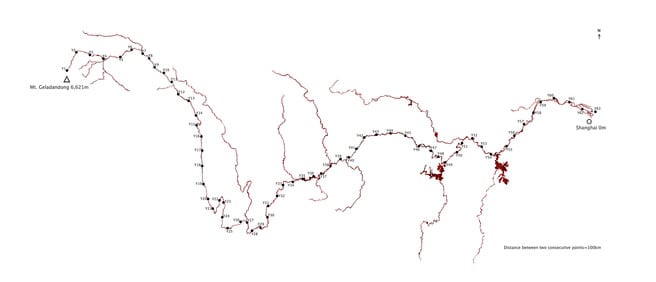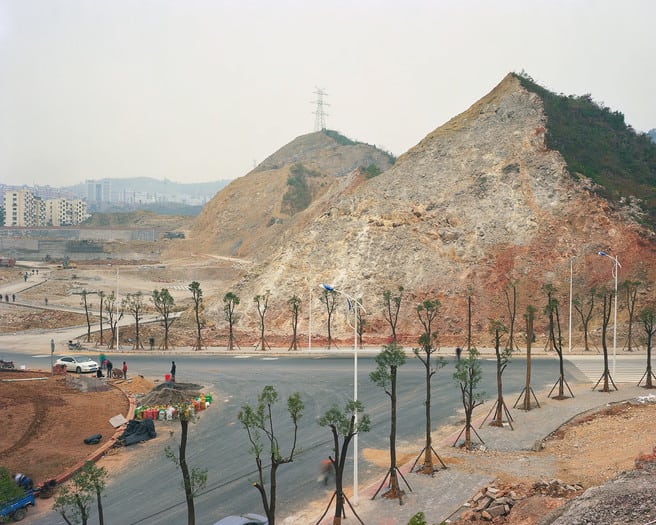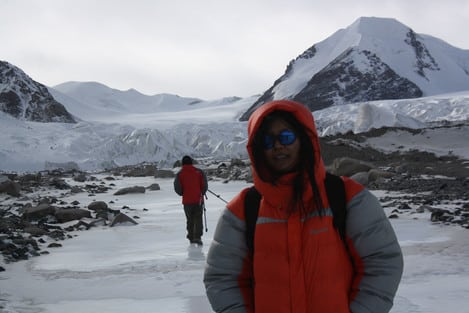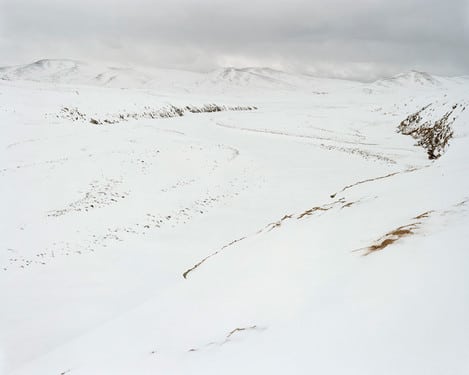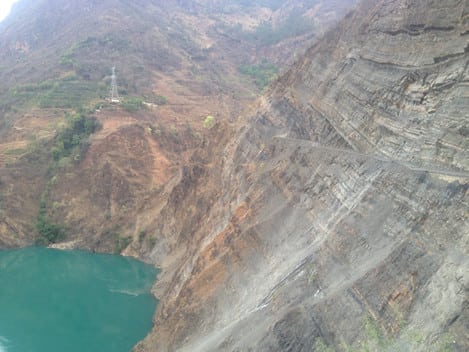Love, hate, doubt and exhaustion

Yan Preston
Previously trained in Clinical Medicine in Shanghai, Preston began to pursue a career in photography with her immigration to the UK in 2005. In 2018 she has been awarded a PhD in Photography at Plymouth University. She is based in West Yorkshire, UK.
In 2005, with my immigration from China to the UK, I committed to my wildest dream - to change my career from an anaesthetist to a photographer. I still remember the accelerating excitement at the time as well as the disbelief when someone referred me as a photographer. I was doing my first-ever assignment, shooting photos of four beautiful horses on the moors near Oldham.
Thirteen years on, my life now is certainly evolving around photography - projects, shows, publications and commissions. Out of the many projects I tried, most were abandoned for one reason or another. But some stuck around and demanded everything from me. For example, between 2010 and 2014, for my ‘Mother River’ project, I photographed the entire 6,211km Yangtze River in China at precise 100 intervals with a large-format film camera. From 2010 to 2017, I investigated urban replantation and ecology recovery in China by photographing transplanted old trees. This year, I’m publishing both projects with Hatje Cantz. Meanwhile, it is time to reflect. Why projects?
Although I never asked the question, now it seems a fitting time to answer it. Projects, for me, are long-term engagement with a given subject. It is a project because it can’t be worked out in one go. There is something complicated enough that it needs to be explored from all angles. Only then can I draw an understanding which will then direct my photography (shooting, editing or presenting). Let’s take Mother River as an example — one would not easily commit to such a punishing project without thinking about it a lot.
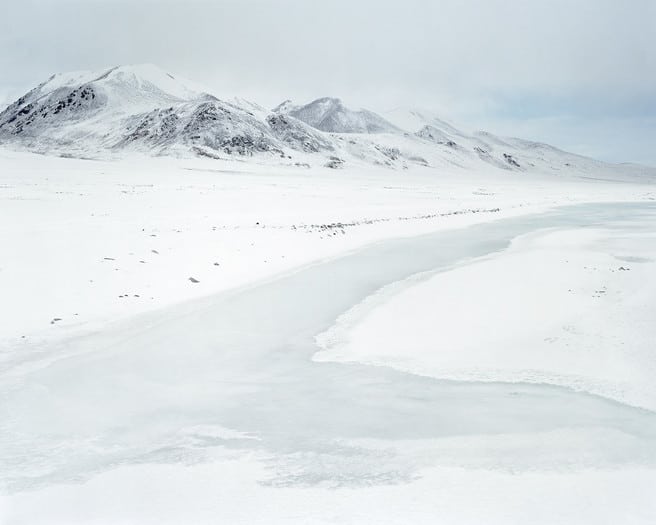
Y2 100km from the river source. 16 Nov 2013. From Mother River series (2010-2014) by Yan Wang Preston.
The Yangtze River is seen as the Mother River in China. It is the absolute national icon, with its images printed on our money, written in poems, sung in songs, and built-in as part of the enduring folklore, myths, legends and television adverts. As a native Chinese person, I regarded it as my own Mother River and the symbol of my motherland. It is part of my national and personal identity.
In 2009, after four years living in the UK, I was going through a kind of identity crisis. I needed to go back to China and to re-connect. The Yangtze was a popular topic then, with its Three Gorges Dam being filled up. A wave of photographers went to make work about the dam, the river and China. I remember seeing images by Edward Burtynsky and Nadav Kander. Rather than impressed, I felt confused. Why were they so different from the Mother River images that I had in my mind? Meanwhile, why only the Three Gorges? They are less than 200km long and the Yangtze River is over 6,000 kilometres. If someone really claims to have portrayed China through photographing the Yangtze River, surely he/she needs to go a bit further than that? I started brewing a tiny idea in my mind: what about going back to photograph the Yangtze, the whole of it? Since everyone was going to the hot spots on the river, shall I try something different, for example, photographing the entire river with some kind of equal intervals so I could avoid all those popular destinations?
This idea was exciting but also scary. The Yangtze is big. So I started preparing for it. I photographed our sweet River Ribble with a trial Point System. Having divided the 121.6km river into eight 15.2km sections on Ordnance Survey map, I found and photographed each point. It was a very interesting experience! I came to an understanding that this way of photographing was very fun. It was like playing a hide-and-seek game with the river. I also realised that this system was not about being ‘objective’. After all, there was no ‘exact’ location to find since all data precision was relative. Meanwhile, my interpretation of both the location and the view was by default subjective.
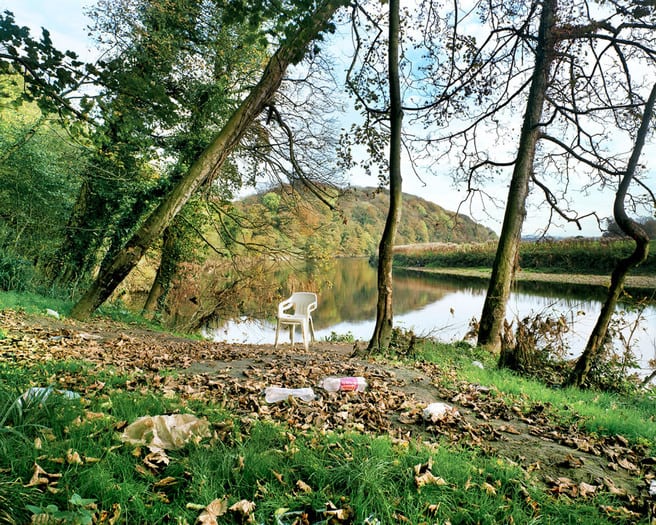
River Ribble Point 7 91.2km from the river source. From River Ribble series (2009-2010) by Yan Wang Preston.
The Ribble is about one fiftieth of the Yangtze in terms of length. In order to lock myself into a system, I got my family’s support and enrolled on a PhD in Photography course at the end of 2010. My proposal was to photograph the Yangtze River with equal intervals. But I couldn’t answer exactly why, how, or what it would mean to do so. Little did I know how epic the next few years would be. I would have to do experiments and research.
In November 2010 I made my first trip to the Three Gorges on the Yangtze. I found the area a world of destruction, just as how Burtynsky had photographed it. This was devastating. Remember, the Yangtze was more than just a river to me. It was a symbol of my perfect motherland. I could not understand the world in front of me, and I felt that I could not see the river. This was absurd, since the river was right there! Consequently, this trip provided one of the most crucial questions for the next few years. Why is there such a big difference between the Mother River in my mind and the reality? And crucially, where did I get all those ideas of the Mother River from? What does the Yangtze mean to me? Why did I refuse to accept it as merely an environmental victim?
In March 2011 for my second trip, I spent one month doing a residency in Chongqing, a mega city sitting on the Yangtze with 30 million people. I had time to visit the river casually everyday. Despite the banal riverscape and the overpowering skyscrapers along its banks, a world of life began to emerge. There was fisherman, vegetable farms, tadpoles, swallows, butterflies and families. Perhaps the river was not as dead as how they were saying. But I still was not satisfied. I decided to do an expedition. To go to the source of the Yangtze River. Hopefully over there, 5,400 meters above the sea level deep into the Tibetan Plateau, I would have no distraction but only the Mother River. On the 16th November 2011, after an exhausting and painful expedition, I finally reached the home of the Yangtze. It was white out. So bright that I could barely open my eyes. But the view was so perfect for the Mother River in my mind. Pure. Grand. I made several pictures of only one view. That was enough.
On my way back I indulged more action. Seeing the river was not enough. I wanted to touch it. So I found a perfect spot (in terms of the landscape backdrop) and made a stone circle on the frozen river. River stones are symbolic in China, representing the gentle but persistent power of water. I held the stones for 10 seconds each in order to symbolically connect with the river’s power. I then made a landscape picture on my large-format camera. I went even further to make a red circle on the river, with my bare hands. That was an immersive experience!
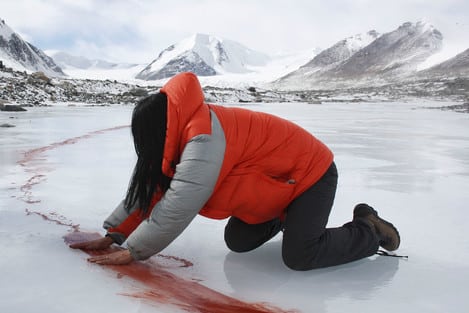
Making a red circle on the frozen Yangtze River headwater. 19 Nov 2011.
From Yuan series (2011) by Yan Wang Preston.
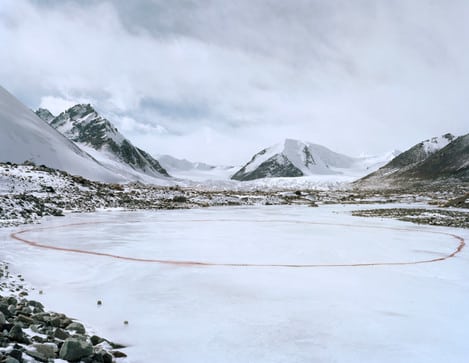
A red, hand-drawn circle on the frozen Yangtze River headwater. 19 Nov 2011. From Yuan series (2011) by Yan Wang Preston.
In August 2012, for my fourth field trip, I decided to push further with this idea of having an embodied engagement with the river. But instead of holding and cherishing stones, I wanted to ‘destroy’ them. I went to Yushu, a Tibetan town, and carved 127 stones before leaving in the rive forever. The chosen location was very different this time —-a completely banal and industrial spot.
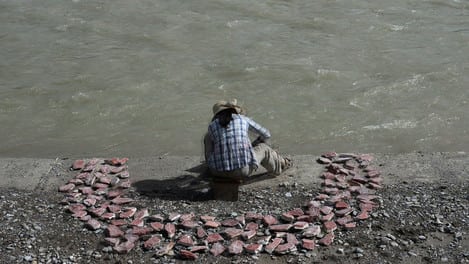
Carving 127 stones by a Yangtze tributary. August 2012. From Yuan series (2011) by Yan Wang Preston.
In the same month, I did the final ‘embodiment’——to swim in the river. Then I came home to West Yorkshire and reflected hard. I digested my own experiences, but also read and researched a lot. An important question was the environmental concerns about the Yangtze. So many people saw it as a victim and saw modern China as a traitor towards its traditional values. However, environmental historians provided another vision of traditional China. For example, according to Elvin (2006), the 18th century China’s environmental degradation was far worse than western Europe at the time! This discovery had a direct impact on my pictorial strategy. I decided not to make misty mounatin-and-water type of pictures. I did not want to fall into the trap to place modern and traditional China in binary.
Meanwhile, I looked at many photographers work, such as Thomas Joshua Cooper, Kate Mellor, Jem Southam, Stephen Shore, Joel Sternfeld, Ai Weiwei, Xu Bing and Zhuanghui. I remember one day I came to a sudden realisation while writing about Sternfeld’s work. Yangtze, as The Mother River, was mythic! In China, it was routinely represented by celebratory images of very few selected places, such as the Three Gorges. Outside of China, it had the added critical representation, but still centred around the Three Gorges. But the river, as how I had found it in my last four trips covering many locations, was far more complex than these two opposing views. It was about life and the ordinary, multilayered landscape created by us and the river together. That was what I was going to photograph!
In 2013, I committed to the idea of photographing the entire 6,211km Yangtze River at precise 100km intervals. In March, I made the major pilot trip and photographed from Y9 to Y25. In June, Y25 to Y38. From September to October I travelled from Y39 to Y62, only to discover that I loaded the films back to front in the whole of these two months! I reshot from Y52 to Y62 immediately before going back to the Tibetan Plateau to photograph from Y4 to Y8. (I already photographed Y1, Y2 and Y3 in 2011.) Then on the 16th November 2013, exactly two years after I reached the source of the river, I stood in the water at the river mouth and made the last shot. But the game was not over yet. In May 2014, while being 5 months pregnant with my daughter, I made one last trip to re-shoot from Y39 to Y51. Meanwhile, for many reasons, I missed two Y15 and Y16, so we now have two blank pages in the picture sequence.
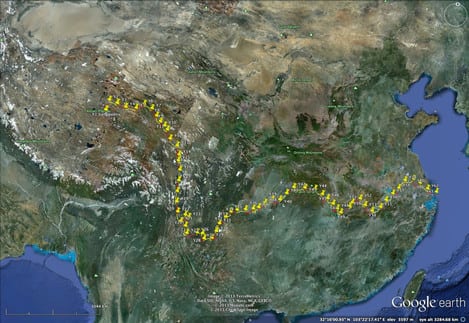
The Y Points as how they were marked on Google Earth. These provided the initial GPS coordinates and locations maps for my following trips.
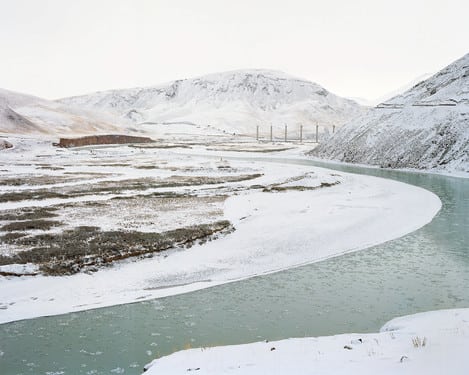
Y8 700km from the river source. 11 Nov 2011. From Mother River series (2010-2014) by Yan Wang Preston.
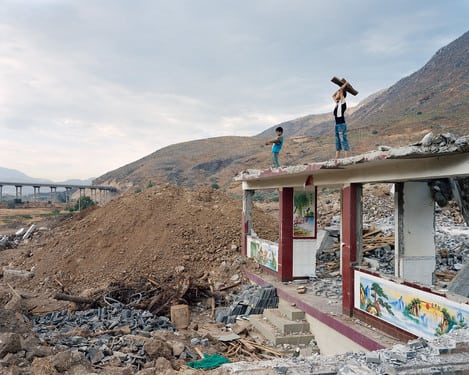
Y25 2,400km from the river source. 5 Jun 2013. From Mother River series (2010-2014) by Yan Wang Preston.
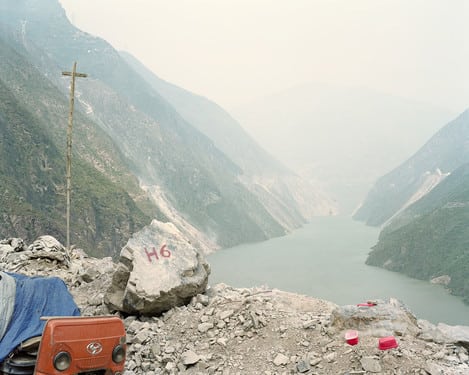
Y32 3,100km from the river source. 16 Jun 2013. From Mother River series (2010-2014) by Yan Wang Preston.
The trips were designed according to seasons, geology, and the safety of travels. For example, the headwater area is a whole bogland in the summer, impossible to travel by car. It would have been extremely difficult to reach my first 10 Y Points in the summer. November is the window season, when the land is just frozen enough to travel with relative ease (well, it’s suffering really, with low oxygen, low temperature, sandstorm, snow, ice and a lot of anxiety). In deep winter, the land would be covered in thick snow, making travel impossible too. The next thirty Y Points go through gorges as deep as 3,000 meters, so I needed a dry season to avoid any wet and slippery condition. After Y38 in Chongqing, the Yangtze enters the Three Gorges with dense population, the travel gets easier but photography gets harder. Too many elements!
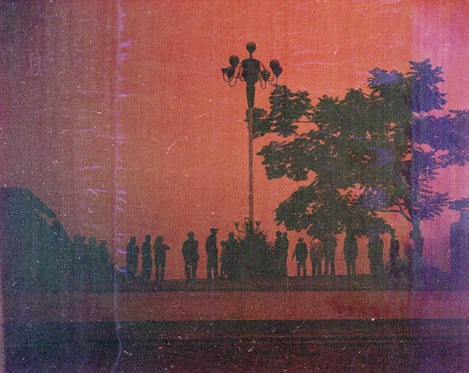
Y41 4,000km from the river source. 16 Jun 2013. Film loaded back-to-front by accident.
From Mother River series (2010-2014) by Yan Wang Preston.
Mother River was completed in 2014. Since then it has won awards and been shown in many venues such as the 56th Venice Biennale, Chongqing China Three Gorges Museum, Gallery of Photography Ireland and Impressions Gallery. (You can visit my website www.yanwangpreston.com to see all the pictures and exhibition installation images). But the game is not over yet. I’m still yet to publish the book as the ultimate legacy of the project. This is again a monumental effort. For the quality and size of the book that I want to make, a lot of money is needed. I decided to launch a Kickstarter campaign, partly to raise funds, partly to offer this amazing journey to my backers. There is still time to pledge (until 30th June) and the link is here: http://kck.st/2L8WCyM
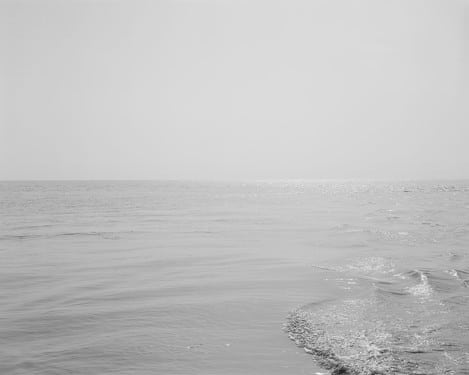
Y63 6,200km from the river source. The river mouth. 16 Nov 2013.
From Mother River series (2010-2014) by Yan Wang Preston.
I’m pretty certain that not all projects are as hard as Mother River. Looking back, it was questions, curiosity, and obsession that took me through the process. The actual doing was more to do with pain, tears, dust, sweat, and the occasional blood. But I have learnt so much from doing it. It was like jumping into an ocean and try to swim towards an unknown shore on the other side. If you’re open-minded and give yourself to it, there will be reward. But ultimately, the reward is the experience, knowledge and skills that you gain in the process.
Thanks to Yan Preston for this look into her Mother River project and the thinking behind the work. You can read more about Yan's work in the interview we made with her last year (here) and we look forward to seeing the final result from Hatje Kantz!

